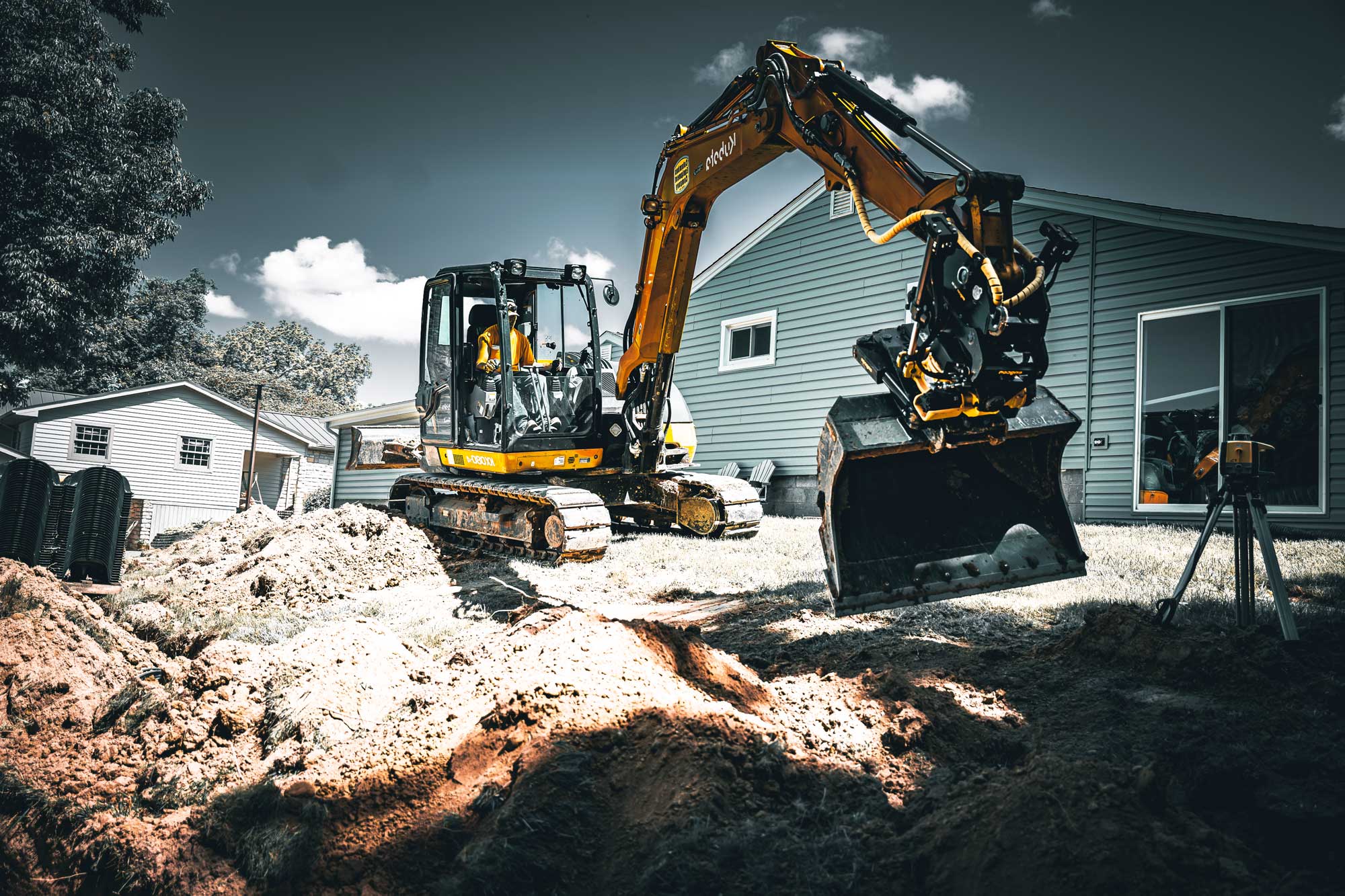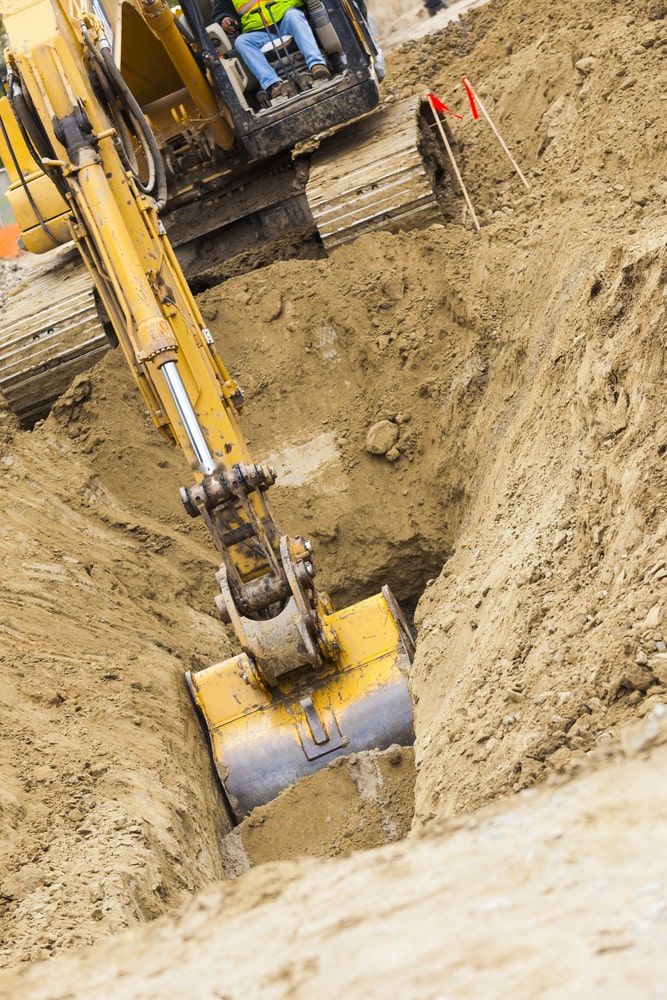Comprehensive Exploration: The Scientific Research Behind Superior Excavation Practices
The realm of excavation techniques is a domain where science links with craftsmanship to unearth the mysteries hidden underneath the planet's surface. From ancient hand tools to modern hydraulic excavators, the development of excavation methods has actually been a testament to human ingenuity and technological improvements. What truly sets remarkable excavation techniques apart is a deep understanding of geological principles, combined with the utilization of sophisticated tools and techniques. By checking out the scientific research behind these practices, we can uncover the keys that exist under our feet and appreciate the precision and expertise that enter into every dig.
Development of Excavation Methods
Throughout history, the evolution of excavation techniques has played a vital function beforehand construction techniques and historical explorations. From the primary tools used by our forefathers to the advanced equipment employed in modern times, the development of excavation methods has actually substantially transformed exactly how we approach different projects.
In ancient times, manual work with basic devices such as wheelbarrows, shovels, and pickaxes was the primary approach of excavation. This labor-intensive process restricted the depth and scope of excavations, commonly leading to slow-moving progress and restricted accessibility to certain websites. As worlds progressed, so did the devices and strategies made use of for excavation.
The Industrial Revolution marked a turning factor in excavation methods with the introduction of steam-powered machinery. This innovation revolutionized the field, permitting faster and more considerable excavations. In contemporary times, modern technology plays a crucial role in excavation, with improvements like general practitioner systems, drones, and 3D scanning boosting precision and effectiveness in the area. The development of excavation techniques remains to form the means we build, explore, and recognize the globe around us.
Duty of Technology in Excavation

The integration of sophisticated technology has actually fundamentally revolutionized the area of excavation, enhancing accuracy and efficiency to unmatched degrees - septic ohio. One of the key technical advancements that has significantly affected excavation techniques is the utilization of GPS systems.
Additionally, the development of 3D modeling and simulation software has streamlined the preparation procedure for excavation tasks. Drivers and engineers can currently envision the entire excavation process prior to breaking ground, identifying possible obstacles and optimizing workflow. Combined with this, the execution of drones in excavation activities has facilitated aerial studies, volumetric dimensions, and site inspections with unrivaled rate and precision.
Geological Principles in Excavation
An understanding of geological concepts is essential for making sure the architectural honesty and stability of excavation sites. Geological elements play a crucial role in determining the feasibility and safety and security of excavation tasks (dump truck companies in ohio). One crucial geological concept to take into consideration is the kind of dirt or rock existing at the website. Various soil types, such as sand, clay, or gravel, have varying degrees of stability and call for various excavation techniques. Natural dirts like clay may need added support to stop collapses, while sandy dirts may be susceptible to disintegration during excavation.
By conducting extensive geological studies and analysis, engineers and excavators can create methods to mitigate risks and make sure the effective conclusion of excavation projects. Eventually, including geological principles right into excavation techniques is important for attaining secure, efficient, and sustainable outcomes.

Most Recent Tools for Excavation
In the realm of excavation methods, contemporary developments in tools have reinvented the efficiency and accuracy of excavation procedures. These drones can offer in-depth airborne studies of excavation sites, using real-time information on topography and prospective hazards.
An additional cutting-edge device acquiring popularity is the implementation of 3D printing technology for producing custom excavation tools. This enables the production of specialized tools that are customized to the particular needs of a job, increasing performance and decreasing downtime.
Furthermore, innovations in materials scientific research have actually resulted in the growth of stronger and extra long lasting excavation devices. excavating ohio. Tungsten carbide-tipped excavator attachments, as an example, deal remarkable efficiency in challenging ground problems, enhancing efficiency on-site
Science's Influence on Excavation Practices

Furthermore, clinical research on soil auto mechanics and geotechnical design has actually given important understandings right into soil actions, allowing excavation experts to make enlightened decisions relating to excavation approaches and soil stabilization methods. Generally, scientific research continues to drive development and enhancement in excavation techniques, making excavation tasks more efficient, economical, and lasting.

Verdict
In verdict, the development of excavation methods has been considerably influenced by developments in technology and a deeper understanding of geological concepts. The most current devices and tools made use of in excavation have actually enhanced efficiency and accuracy in the area. The application of scientific understanding has significantly boosted excavation methods, resulting in extra efficient and sustainable techniques for excavating numerous kinds of materials.
In the world of excavation techniques, modern technologies in devices have revolutionized the performance and precision of excavation procedures. By leveraging clinical concepts, the excavation industry has been able to substantially boost performance, accuracy, and security in excavation procedures. GPR enables excavation teams to non-invasively scan and map subsurface frameworks, energies, and possible hazards, allowing them to plan excavation tasks with higher accuracy and decreased risk of mishaps.
Additionally, scientific research on soil auto mechanics and geotechnical engineering has supplied beneficial understandings into soil habits, enabling excavation professionals to make enlightened decisions relating to excavation approaches and soil stabilization strategies. Generally, science proceeds to drive advancement and improvement in excavation techniques, making excavation jobs a lot more hop over to these guys efficient, cost-efficient, and sustainable.